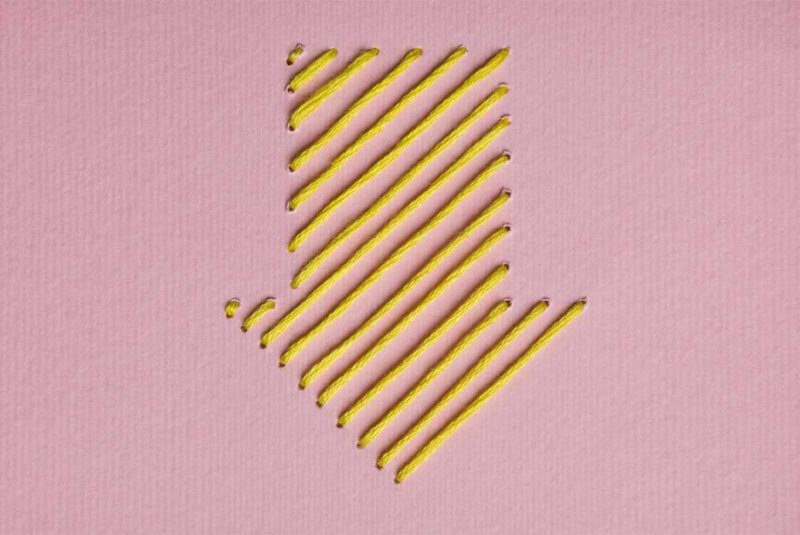Your debt is stacking up, and you can’t make the minimum payments on your credit card bill. You’re running out of options…when, gleaming from the depths of your wallet, you see a different credit card.
Or maybe you’re planning a big trip, and are hoping to earn the necessary points by paying for everything — including your other credit card bills — with your rewards card.
In either situation, you have the same question: Can you pay a credit card with a credit card?
How Do You Pay a Credit Card With Another Credit Card?
The short answer: You can’t. At least probably not in the way you’re thinking. You can’t just log in to your Discover account and pay your bill by typing in your Amex number, and that’s true for most if not all issuers.
You can, however, pay your credit card with a credit card in two other ways: with a cash advance (which we don’t recommend), or by transferring your balance to another card.
Cash advance or convenience check
We’re going with the worst method first.
You know those “convenience checks” your card issuer sends in the mail? You could either cash one of those — or use your card to take a cash advance from the ATM — then deposit the money into your checking account and use it to pay your bill.
While it sounds easy, it’s a bad idea. Cash advances are expensive: They usually come with fees of up to 5% of whatever you withdraw, and they immediately start accruing interest charges (often at a rate of around 25%).
If you took out $1,000, for example, you’d owe about $70 in fees by the end of the month, and that amount would continue to increase each day until you paid off your debt.
Balance transfer
A better alternative? Pay your credit card with a balance transfer.
Just like they sound, these involve transferring part or all of your balance from one credit card to another. You could, for example, transfer the balance from your Chase card to a new card from Citi. You usually can’t transfer balances between cards at the same bank.
Balance transfers can be an attractive option when the new card has a lower interest rate (APR) than your current card. In fact, many balance transfer cards offer 0% interest on transferred balances for a certain time period.
Not only can balance transfers tide you over when money is tight, but they can also provide an effective way to temporarily avoid paying interest on the credit card debt you already have.
5 Things To Know About Balance Transfers
Here are a few things you should know about transferring a balance.
1. They’re not free
When you transfer a balance to a new card, that card’s issuer will usually charge a fee that’s 2-5% of the balance transferred. So, if you transfer a $1,000 balance, you could owe between $20 and $50 in fees, which the issuer usually adds to the new balance.
A few cards, however, don’t charge balance transfer fees if you complete the transfer within a certain period of opening the card.
2. They could save you interest
Although it comes with fees, transferring a balance could ultimately save you money if you’re paying a high interest rate on your credit card debt.
Let’s say you have one card, cleverly named Card A.
Card A
- Balance: $10,000
- APR: 18%
- Minimum payment: $400
If you just make the minimum monthly payments on Card A, it’d take you more than 13 years and almost $6,000 in interest before you pay it off. Not cool.
But then you get a balance transfer offer in the mail for a new card: Card B.
Card B
- APR: 0% for 18 months
- Balance transfer fee: 3% of the balance transferred
If you transfer your $10,000 balance from Card A to Card B, it’ll cost you $300 in fees. But if you manage to pay $572 per month on Card B, therefore paying off the entire balance before the introductory APR ends, you won’t pay any interest.
In other words? After the balance transfer fee, you’ll have saved $5,700.
3. Their low APRs won’t last forever
Most cards designed for balance transfers have a low introductory APR — often 0%. The interest-saving strategy above works best if you pay off your full balance before the introductory period ends.
After the intro period is up (often around 12 to 18 months), your card issuer will start charging a regular interest rate — which could be as high as 18–22% or more. So if you don’t pay off your balance by that point, you’ll be in the same boat you were before.
As with any card, it’s also essential to pay every bill on time. Just one late payment could trigger the credit card issuer to end your intro APR period. That could leave you with an extra high penalty APR of about 30%!
If you can’t pay off a balance in the specified time period, you may be able to make another transfer to a different low-interest card. The better your credit, the more likely you are to qualify for these offers. That said, you’ll have to decide if another transfer is worth the fees.
4. They consider your credit
A balance transfer card is just like any other credit card; it’s just called that because it has features like low APR or low fees that make it attractive for balance transfers.
So when you apply for a balance transfer card, the card issuer will perform a hard inquiry on your credit reports to see if you qualify. For the best balance transfer cards, you’ll need strong credit scores to get approved.
If you have bad credit, unfortunately, you might not qualify for any balance transfer offers — in which case you’ll have to try one of the alternatives mentioned below.
Also worth noting: Balance transfer cards come with a credit limit that’s based on your creditworthiness. In some cases, this new credit limit won’t be big enough for you to transfer your full credit card balance from your original card. Some issuers may also set limits on how much debt can be transferred.
5. They could signal other financial issues
Although balance transfers can be a savvy financial tool when used correctly, they can also be a sign of bad financial habits.
Emergencies happen to all of us, but if you’re often scrambling for ways to pay your bills, it might be time to take a critical look at your finances.
Here’s one situation you definitely don’t want to end up in: transferring your balance from Card A to Card B, and then racking up additional debt on Card A.
If you’re worried about losing control, you could cut up Card A and delete its number from any saved online accounts. You could also close the card, but that will reduce your available credit — and could therefore lower your credit scores.
Can You Pay a Credit Card With a Credit Card Without Paying a Fee?
Technically, yes.
If you use a balance transfer card with a 0% APR offer and no balance transfer fee, and you end up paying the full balance before the introductory APR offer expires, the entire process can be totally free. But you’ll be charged interest starting when the introductory offer ends if you can’t pay the balance within that timeframe.
Credit cards without balance transfer fees are sometimes hard to come by, but even if you’re stuck paying a transfer fee, you’ll likely end up paying much less than if you’d paid the balance with a cash advance.
Can You Pay a Credit Card With a Credit Card To Get Points?
We’ve got some bad news for all you points junkies out there: Unfortunately, you typically can’t earn rewards when transferring a balance.
So if you’ve already signed up for a new card and are trying to meet the minimum spend, consider paying your rent with a credit card. Although you’ll pay fees, it could help you snag that lucrative bonus.
Alternatives to Paying a Credit Card With a Credit Card
While balance transfers work in certain situations, they’re not your only option.
Here are some alternative ways to pay off credit card debt:
Personal loans
Since they often have lower interest rates than credit cards, it sometimes makes sense to use personal loans to pay off credit card debt.
If you pay off multiple cards with one personal loan, you’ll also consolidate several statements and due dates into one monthly bill. And, because personal loans are “installment loans” — rather than “revolving” like credit cards — this approach could boost your credit scores, too.
Home equity loans
For homeowners with some equity in their mortgage, a little-known strategy is to pay your credit card with a home equity loan (HELOC).
If going this route, proceed with extreme caution. Paying a credit card with a HELOC means putting up your house as collateral for your debt — which means you could lose your house over missed payments.
0% APR credit cards
Instead of transferring Card A’s balance to a new card — and therefore paying balance transfer fees — you could open up a 0% APR card (Card B) and charge your everyday expenses to it.
Then, after making just the minimum payment on Card B, you could use the cash you’ve freed up to pay off Card A (and its higher interest rate).
As with the HELOC method, this strategy comes with risk. You should only pursue it if you know you’ll pay off the 0% APR card before its introductory period is over. Otherwise, you’ll end up in a worse situation than you’re in now.
Debt avalanche or debt snowball
These are two different debt payoff strategies:
- Debt avalanche: Pay off your loans in order of interest rates, from the loan with the highest interest (probably your credit card) to the lowest interest (probably your mortgage or student loans).
- Debt snowball: Pay off your loans in order of balance owed, from the loan with the lowest balance to the loan with the highest balance.
Ready To Pay a Credit Card With a Credit Card?
Be responsible with your balance transfer: Make on-time payments on your new card, and strive to pay off the balance before the intro APR period ends. If you keep your old card open, don’t put any additional charges on it.
Paying a credit card with a credit card can be helpful in a pinch — as long as you take steps to avoid falling deeper into credit card debt.
The Short Version
- You can pay your credit card with a credit card in two ways: with a cash advance (which we don’t recommend), or by transferring your balance to another card
- Balance transfers can be an attractive option when the new card has a lower interest rate (APR) than your current card
- A balance transfer card is like any other credit card. It’s just called that because it has features like low APR or low fees that make it attractive for balance transfers




